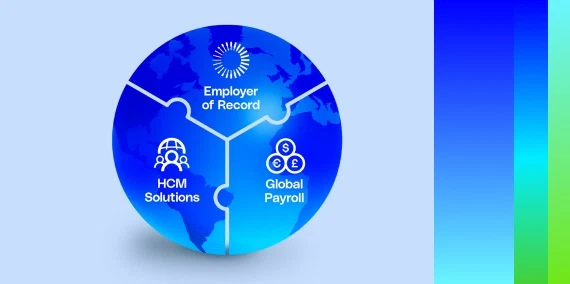Is your company planning a global expansion? Lithuania has become a popular destination for international jobseekers in recent years, but if your company is considering a move to the country, you’ll need to have an understanding of the work visa process first.
Types of work visas in Lithuania
Like any other country, Lithuania has a unique set of laws regarding immigration. The country is part of the European Union (EU), which means citizens of other EU member states, EEA, and Switzerland do not need a work permit or visa.
All other individuals who plan to work in Lithuania will generally need to obtain 2 separate documents: a work permit and a visa to enter and stay in Lithuania. The visa required for international employees is referred to as a national visa (D).
Requirements to obtain Lithuania work visas
It is the employer’s responsibility to apply for a work permit on behalf of the international employee. The employee should provide the necessary documents, which include:
- Proof of qualifications for the job, such as previous professional experience and education
- Personal identifying information
In addition to a work permit, the employee will need to apply for a national visa. Several documents are required for the application, including:
- An application form for a national visa, completed using the electronic application form
- A passport that has been issued within the last 10 years, containing 2 or more blank pages, and valid for at least 3 months after the duration of the visa
- A passport photo, which should be in color
- A letter of mediation from the employer, which should be submitted electronically
- A work permit
- Proof of sufficient funds and means of income
- Proof of health insurance
Application process
The process of obtaining a work permit in Lithuania is a collaboration between the employee and the employer in the country. Here’s an overview of the entire process, from the initial employment offer to the employee’s first day on the job:
- The international worker accepts a job offer from an employer in Lithuania. Keep in mind that employers need to demonstrate that they were unable to find a suitable candidate within the EU, EEA, and Switzerland before hiring a non-national by advertising the position for at least 5 working days at the local labor services.
- The potential employee submits the relevant documents to the employer.
- The employer submits the work permit application to the Lithuanian Labor Exchange.
- The Labor Exchange issues the work permit.
- The employee applies for a national visa (D) at the Lithuanian consulate or diplomatic mission in their country.
- Upon approval of the visa or residence permit, the employee may enter Lithuania.
- The employer submits a notification to the Social Security Fund Board (Sodra) through the e-system EDAS, no later than 1 business day before the start of the employee’s work in Lithuania. Only after this step the employee may start working.
While it’s always recommended to plan ahead when it comes to obtaining work visas, the process is relatively quick in Lithuania. The issuance of a work permit generally takes place within 7 business days, and the processing time for a national D visa is approximately 15 working days.
Other important considerations
There are a few circumstances that would allow a non-EU citizen to work in Lithuania without a permit. If the job requires high-level professional qualifications, the employee may instead obtain a decision on compliance with labor market needs. If applicable, this decision is issued by the Migration Department under the Ministry of the Interior of the Republic of Lithuania.
The process to obtain this documentation is similar in that it’s also carried out by the employer. However, employees who are approved under this decision will need to obtain a temporary residence permit in lieu of a national visa (D).
As of July 2023, national visas will no longer be issued to certain individuals; nationals from other countries in these categories must obtain a temporary residence permit instead:
- Teachers and researchers
- Workers in occupations listed as “missing professions”
- Workers with a permit issued by the Employment Service
- Citizens of Australia, United Kingdom, United States, New Zealand, South Korea, Canada, and Belarus
Discover how G-P can help you manage your global teams.
At G-P, we’re committed to breaking down barriers to global business, enabling opportunity for everyone, everywhere, and helping companies tap into the fullest potential of their workforce. We help you maintain full compliance with local laws and ensure everything from hiring and onboarding to paying your employees is quick and easy, regardless of where they are in the world.
Find out more about how our global employment platform can help you grow your team across the globe.
–
For this particular location, G-P may offer support processing certain work visas and permits. Contact us today to assess your specific needs.






